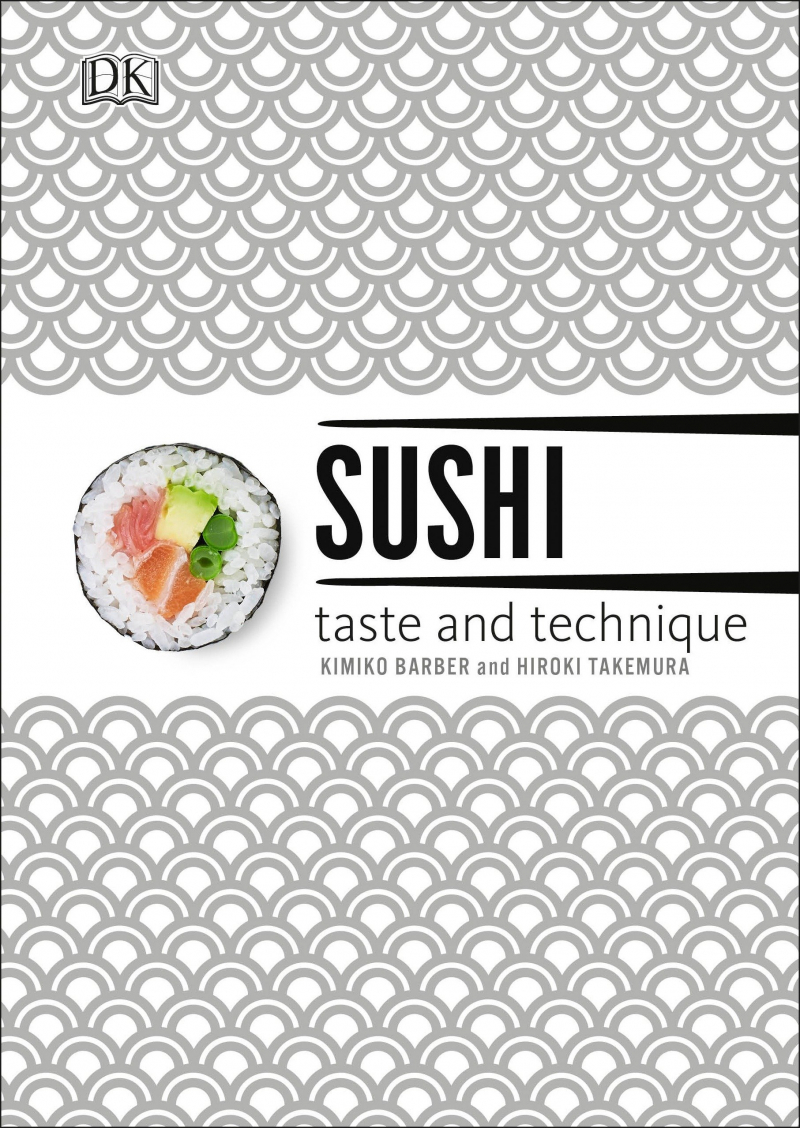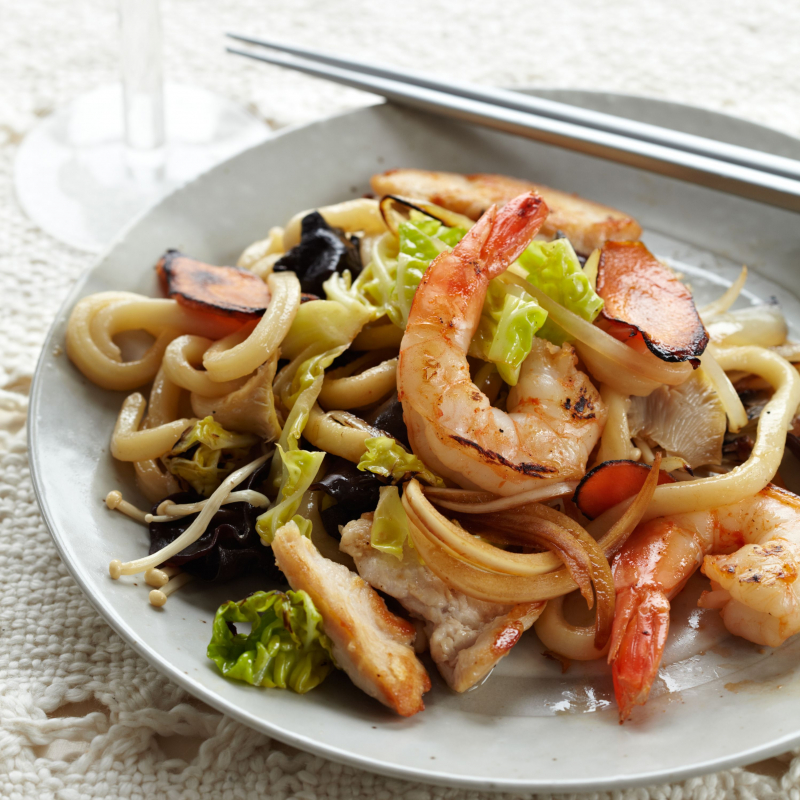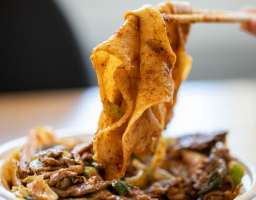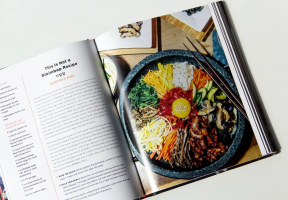Top 10 Best Japanese Cookbooks
As foodies become obsessed with the health benefits of Japanese cooking, fast food-style ramen bars and sushi joints are springing up all over the world. ... read more...However, authentic Japanese cuisine is much more than raw fish, sticky rice, and meaty broths. With one of these top Japanese cookbooks, you can get ahead of the trend and learn how to make tasty street food dishes like gyoza and tonkatsu.
-
When it was first published, Japanese Cooking: A Simple Art transformed the culinary world's perception of Japanese cooking, elevating it from obscure ethnic cuisine to haute cuisine. Much has changed in the twenty-five years since. Japanese cuisine is popular among diners all over the world. Sushi is as much a part of the Western culinary scene as burgers, bagels, and burritos, and some Japanese chefs have even become household names. Shizuo Tsuji, a scholar who trained under famous European chefs, was so careful and precise in his descriptions of the cuisine and its vital philosophies, and so thoughtful in his choice of dishes and recipes, that his words—and the dishes they help produce—are as relevant today as they were when he first wrote them.
Tsuji's classic work is honored in this 25th Anniversary edition. The volume now includes a thought-provoking new Foreword by Gourmet Editor-in-Chief Ruth Reichl and a new Preface by the author's son and Tsuji Culinary Institute Director, Yoshiki Tsuji, in addition to M. F. K. Fisher's eloquent introduction. This edition, beautifully illustrated with eight pages of new color photos and over 500 drawings, contains 230 traditional recipes as well as detailed explanations of ingredients, kitchen utensils, techniques, and cultural aspects of Japanese cuisine, and continues the Tsuji legacy of bringing the Japanese kitchen within Western cooks' reach.
View Details: amazon.com/dp/1568363885

Japanese Cooking: A Simple Art 
Japanese Cooking: A Simple Art -
Harumi Kurihara, Japan's most popular cookery writer, selects her favorite foods and presents more than 60 home-style recipes for you to make for family and friends in Everyday Harumi. Harumi wants everyone to be able to make her recipes, so she shows how simple it is to cook Japanese food for every day occasions without having to go to specialty food stores. This warm and approachable cookbook, photographed by award-winning photographer Jason Lowe, invites you to cook and share Japanese food in a simple and elegant style.
Harumi presents recipes for soups, starters, snacks, party dishes, main courses, and family feasts using many of her favorite ingredients, all presented in her effortless, down-to-earth, and unpretentious approach to stylish living and eating. Every recipe is beautifully photographed and includes step-by-step instructions that demonstrate key Japanese cooking techniques. Texture and flavor are important in Japanese cuisine, and Harumi walks you through the basic sauces you can make at home as well as the pantry staples you should have on hand.View Details: amazon.com/dp/1840917873

Everyday Harumi: Simple Japanese food for family and friends 
Everyday Harumi: Simple Japanese food for family and friends -
Tadashi Ono and Harris Salat introduce you to this irresistible, homey style of cooking in Japanese Soul Cooking. You may recognize some familiar favorites, such as ramen, soba, udon, and tempura, as you explore the range of exciting, satisfying fare. Other, lesser-known Japanese classics like wafu pasta (spaghetti with bold, fragrant toppings like miso meat sauce), tatsuta-age (fried chicken marinated in garlic, ginger, and other Japanese seasonings), and savory omelets with crabmeat and shiitake mushrooms will become instant favorites in your kitchen. With step-by-step photographs and foolproof instructions, you'll be whipping up chahan fried rice, mentaiko spaghetti, saikoro steak, and more for friends and family in no time.
Ono and Salat's fascinating investigation into the surprising origins and global influences behind popular dishes is accompanied by rich location photography that captures the energy and essence of this food in everyday life, bringing beloved Japanese comfort food to Western home cooks for the first time.
View Details: amazon.com/dp/1607743523

Japanese Soul Cooking 
Japanese Soul Cooking -
In the updated Sushi: Taste and Technique, you can learn how to make your favorite sushi rolls at home or discover a new recipe. This classic guide to making homemade Japanese sushi includes traditional rolls as well as the latest trends, such as modern sushi bowls, omelets, and burritos. You can also learn about the history of sushi, ensure that you have the proper utensils and that they are being used correctly, and learn proper etiquette for serving and eating sushi.
Kimiko Barber and Hiroki Takemura's detailed step-by-step photographs and foolproof recipes will help you master the knife skills and hand techniques required to prepare perfect sushi and sashimi, from authentic pressed, rolled, and stuffed sushi to a sushi sandwich. Refer to the fish and shellfish guide to learn how to choose and cut the right meat for your sushi, as well as to get the best recommendations for your desired meal. Let Sushi: Taste and Technique, a beautiful and in-depth reference guide to everything sushi, elevate your home menu.View Details: amazon.com/dp/1465429840

Sushi: Taste and Technique 
Sushi: Taste and Technique -
Through simple, clear-flavored recipes made from family crops and other local, organic ingredients, Japanese Farm Food provides a unique glimpse into life on a Japanese farm. The vibrant images of green fields, a traditional farmhouse, antique baskets, and ceramic bowls filled with beautiful, simple dishes by Kenji Miura are interwoven with Japanese indigo fabrics to convey an intimate, authentic portrait of life and food on a Japanese farm. The recipes in Japanese Farm Food, with a focus on fresh and thoughtfully sourced ingredients, are ideal for fans of farmers' markets and home cooks looking for simple Japanese dishes. This incredible collection is rounded out by personal stories about family and farm life.
Nancy Singleton Hachisu, an American born and raised in Japan, lives on a rural Japanese farm with her husband and teenage sons, where they prepare these 165 vibrant, seasonal dishes. The recipes are organized logically in order to reassure you about how simple it is to cook Japanese food. Japanese Farm Food is more than just a cookbook; it's a story about love, farm life, and community. Hachisu demystifies the rural Japanese kitchen, laying bare the essential ingredients, equipment, and techniques for Japanese home cooking, covering everything from pickles and soups to noodles, rice, and dipping sauces, with a special emphasis on vegetables.View Details: amazon.com/dp/1524868701

Japanese Farm Food 
Japanese Farm Food -
In a market crowded with bento books emphasizing the cute and decorative, this book stands out for emphasizing the health and economic benefits of the bento, as well as providing very practical guidelines on how to ensure that a daily bento lunch is something that can easily be incorporated into anyone's lifestyle. This book is ideal for bento beginners, but it also contains a wealth of new bento recipe ideas and tips for Just Bento aficionados.
Itoh's knowledge is now available in book form for the first time. The Just Bento Cookbook includes twenty-five appealing bento menus and more than 150 recipes, all of which were specially created for this book and are divided into two sections: Japanese and Not-So-Japanese. Classic bento menus such as Salted Salmon Bento and Chicken Karaage Bento can be found in the Japanese section, while the Not-So-Japanese section demonstrates how Western food can be adapted to the bento concept, with delicious menus such as Summer Vegetable Gratin Bento and Everyone Loves a Pie Bento.
Itoh includes sections on bento-making equipment, bento staples to make and stock, basic cooking techniques, and a glossary in addition to the recipes. There is a section with a planning chart that shows readers how they can organize their weekly bento making.View Details: amazon.com/dp/1568363931

The Just Bento Cookbook: Everyday Lunches To Go 
The Just Bento Cookbook: Everyday Lunches To Go -
While crowds queue outside American ramen powerhouses such as Momofuku Noodle Bar, chefs and food writers in the know adore Ivan Orkin's traditional Japanese take on ramen. Ivan Ramen follows Orkin's transformation from a true New Yorker to the chef and owner of one of Japan's most popular ramen restaurants, Ivan Ramen. His ramen enthusiasm is contagious, his story is fascinating, and his recipes are to die for, including the complete, detailed recipe for his signature Shio Ramen, master recipes for the fundamental types of ramen, and some of his most popular ramen variations.
Orkin is likely the only chef in the world with the knowledge and access to present such a candid look at Japanese cuisine to a Western audience, and he is perfectly positioned to write what will be the definitive English-language overview of ramen and all of its components. Ivan Ramen will inspire you to forge your own path, educate you on Japanese culture, and leave you with a deep appreciation for what goes into a seemingly simple bowl of noodles.
View Details: amazon.com/dp/1607744465

Ivan Ramen 
Ivan Ramen -
With his simple yet sophisticated recipes, James Beard Award-winning chef Takashi Yagihashi introduces American home cooks to essential Japanese comfort food by combining traditional Japanese influences, French techniques, and more than 20 years of cooking in the Midwest. Takashi explains noodle nuances and explores each style's distinct regional identity while emphasizing quick-to-the-table shortcuts, the use of fresh and dried packaged noodles, and kid-friendly dishes. Takashi, an expert guide, recalls his childhood in Japan and leads cooks on a discovery tour of the rich bounty of Japanese noodles that is so easily accessible today.
Takashi's Noodles aims to show Westerners how quick and simple authentic Japanese cooking can be, with seven chapters each dedicated to a different type of noodle and even the odd recipe focusing on packet noodles. The detailed recipes for chilled crab and shrimp ramen salad, stuffed chicken wings, and corned beef with rice noodles by Yagihashi are not to be missed. In addition to the hot and cold recipes, Yagihashi uses this book to teach readers about traditional Japanese ingredients and cooking techniques, as well as provide extensive guidance on selecting the right type of noodle for each dish.View Details: amazon.com/dp/1580089658

Takashi’s Noodles 
Takashi’s Noodles -
There has never been a phenomenon like Momofuku before. It was once an unrecognizable word, but it is now synonymous with the award-winning Momofuku Noodle Bar, Ssäm Bar, Ko, Má Pêche, Fuku, Nishi, and Milk Bar restaurants in New York City, Toronto, and Sydney. Chef David Chang has single-handedly revolutionized cooking in America and around the world with his use of bold Asian flavors and impeccable ingredients, mastery of the humble ramen noodle, and unwavering devotion to pork.
Chang tells the story of his unintentional rise to superstardom, which, while fraught with hiccups, happened at breakneck speed. And the recipes in this book are coveted by anyone who has dined — or wished to dine — at any Momofuku location (yes, the pork buns are here). This is a must-read for anyone who is passionate about food. Momofuku makes for great reading as well as fantastic culinary inspiration, with the occasional curse word and unrivaled honesty. Delicious recipes for Bo ssäm, Ko egg, and even Brussel sprouts with kimchi are sprinkled among the humorous tales of Chang's beginnings.View Details: amazon.com/dp/030745195X

Momofuku 
Momofuku -
Nanban: Japanese Soul Food is the perfect introduction to real Japanese cooking for the Japanophile Westerner, written by the guy who won the UK's 2011 Masterchef with a fancy burger recipe. Anderson, who was obsessed with the Japanese culture from a young age, spent his adolescence immersed in a world of Nintendo, J-pop, and anime, and taught himself to like sushi. Later, after a family vacation to Japan, he decided to study Japanese food history at university, which included a four-week research stint in Japan. Anderson opened his hugely popular Japanese street-food style restaurant in London after spending another two years in Japan and winning Masterchef.
Southern Japanese soul food includes ramen, gyoza, fried chicken, udon, pork belly buns, and other boldly flavored, stick-to-your-ribs dishes. This hearty comfort food has become popular in the United States as street food and in ramen bars as an antidote to typical refined restaurant fare. Nanban brings the best of these crave-inducing treats to home cooks in a unique package that includes a cool exposed binding. Nanban is the ideal cookbook for any Asian food lover, with recipes ranging from pungent kimchi to three types of Japanese fried chicken, as well as a primer on Japanese ingredients and substitutions.View Details: amazon.com/dp/0553459856

Nanban: Japanese Soul Food 
Nanban: Japanese Soul Food































